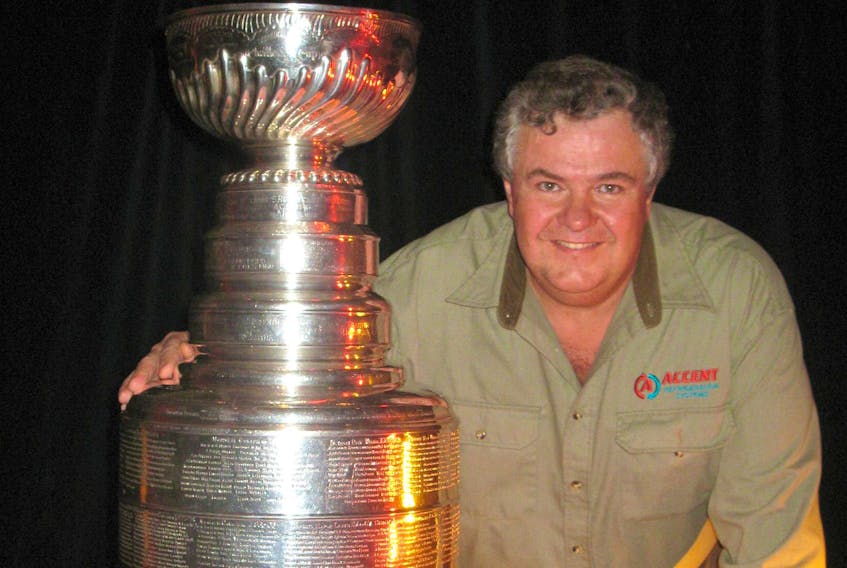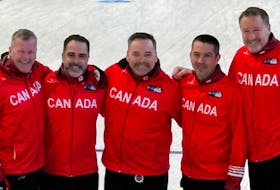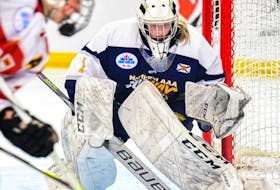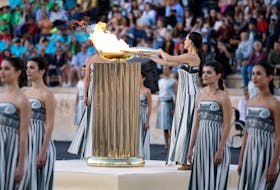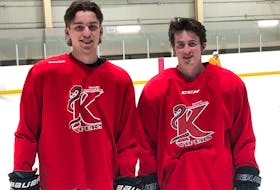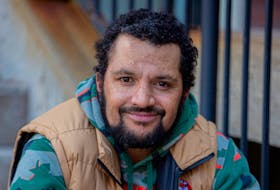Art Sutherland has been providing cold comfort in ice arenas around the globe for nearly 30 years.
“What we do is actually the refrigeration underneath the ice,” Sutherland said of Accent Refrigeration Systems, a British Columbia company that he co-founded in 1990.
“We don’t build the ice surface itself. We do all the cooling systems that keep the ice cold.”
The company designs, manufactures, ships and installs the refrigeration systems.
“We do them from start to finish,” he said.
Sutherland, 61 and originally from Stellarton, is working on 10 ice rinks for the 2022 Winter Olympics in Beijing and has been involved with ice refrigeration systems as a designer or a consultant for each Winter Olympics since the 2002 Games in Salt Lake City, Utah.
“I’m an oversight person,” Sutherland said.
“In Korea at the last Olympics and in China (2022), they use companies from their own countries to build and install and we oversee the design work and we’re actually there during startup to make sure everything is working properly.”
He said the Asian countries were using an old form of refrigerants that had a very high global warming potential.
“Everybody is concerned about global warming and the release of refrigerants into the atmosphere is one of the largest contributors to global warming.”
Six of the 10 rinks to be used in Beijing for the 2022 Games are using carbon dioxide instead of traditional refrigerants. CO2 is the base point that all other refrigerants are compared with when measuring how much heat a greenhouse gas traps in the atmosphere.
“CO2 refrigerants have a global warming potential of just 1, versus the refrigerants they were going to use in China that had a global warming potential of 3,950,” he said. “So it’s considerably better for the environment.”
The CO2 systems create better ice but are more expensive to install.
“Traditional refrigeration systems would refrigerate a glycol that would be pumped through the ice rink floor at low pressure, around 25 pounds per square inch, where (with) CO2, the pressure in the refrigerated floor is closer to 375 pounds of pressure while the rink is operating. Rather than using traditional plastic pipe, they have to use welded steel or stainless steel piping in the refrigerated floor.”
The CO2 systems are thermally efficient in heat recovery.
“In an ice rink industry, in an Olympic event, there is a lot of opportunity to use heat ,such as heating the building itself, and the dehumidification is very important, especially in the speedskating oval where they can have no moisture whatsoever or it slows down the sport,” Sutherland said. “They use the power from the heat to regenerate the dehumidifiers, which makes them very, very efficient.
“With CO2, it is possible to have a much more even ice temperature than you can get with a glycol pumping through the floor. Much more consistent, the entire ice surface will be the exact same temperature all around the ice, where with glycol, there is a temperature drop as the glycol picks up heat, so it is more of a variable temperature.”
Sutherland said humidity has a huge impact on ice quality.
“I would like to claim it’s what we do underneath that makes the biggest difference, but we also do the dehumidification above the ice. Just like in the home, with single-pane windows, if you put your kettle on, all the humidity goes to the cold spot, which is the window. In an ice rink, the coldest spot is your ice surface, so any humidity in the air immediately goes to that ice surface and then it creates a physical barrier to skating, just the roughness of the frost. ... It just makes for bad ice.”
Sutherland’s on-site expertise allows him access to Olympic events.
“At Korea (2018), I was at the Olympics throughout the whole event,” he said. “I would be on site. I keep my eyes on the ice. I usually go to the main events.”
One of the main events at the 2018 Pyeongchang Olympics was the women’s hockey competition, where Sutherland got to see forward Blayre Turnbull of Stellarton represent Canada. Sutherland went to school with Blayre’s father, Ron.
“I was there to see all of Blayre’s games and make sure the ice was good,” he said.
Sutherland began his training in refrigeration at the former Colchester Regional Vocational School in Truro and said he was inspired by teacher Ken Ledham.
“He just had some great stories about things he did in the industry,” Sutherland said. “He kind of piqued my interest and I just continued on with it. I have been self-educating every year since then, learning everything I could along the way. It was within a very few years I was building ice rinks and I just kept on doing that. That is a big part of our business but not the only part.”
He lives in Langford, B.C., just west of Victoria. There, he and longtime company partner Greg Hillman completed an energy-recovery project to heat 1,000 houses with large-scale heat pumps.
“We take the energy from the indoor ice rink that we built and the outdoor ice rink, but that is not enough energy to do all the work. Then we have 300 bore holes in the ground that we use for geothermal energy as well. That was our largest heating project but we’ve done apartment buildings, warehhouses, swimming pools all around the globe. We just finished an ice rink in New Zealand where we are heating a swimming pool 600 yards away. That saves them so much money because the cost of energy is very high in New Zealand.”
The company is working on two mega-telescope projects, one to sit atop an Hawaiian mountain and the other in Chile.
“It’s going to be the world’s largest,” he said of the 30-metre telescope project finishing up on a Hawaiian island. “We developed a CO2 refrigeration system that is going to cool the optics chamber to around 35 degrees below zero and that gets rid of all the heat waves that are in the air in the optics chambers.”
The company has designed and installed arena refrigeration systems in 17 countries, but most of its work is in the United States and Western Canada. Sutherland’s wife, Teresa, who hails from St. Andrew’s, N.B., and their four daughters, ranging in age from a 28-year-old who works at Accent to the youngest who graduated from high school this month, often travel with him on company projects. He also devotes a lot of time to consultant work, which took him to Atlanta, Calgary and Kansas City, Mo., the past few days.
Sutherland said he’s not yet ready to put his career on ice.
“We have some people interested in taking up the reins and running with it,” he said. “But I still love getting up and doing it every day. It’s not a burden to me at all. There are lots of new ideas and new opportunities every year.”

